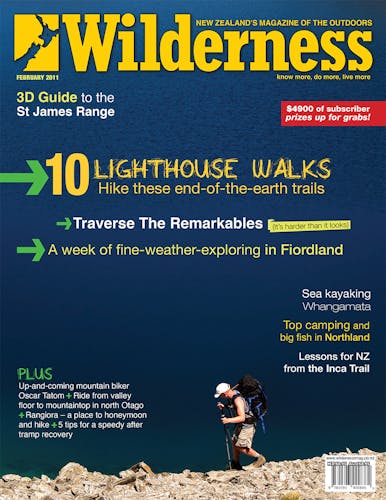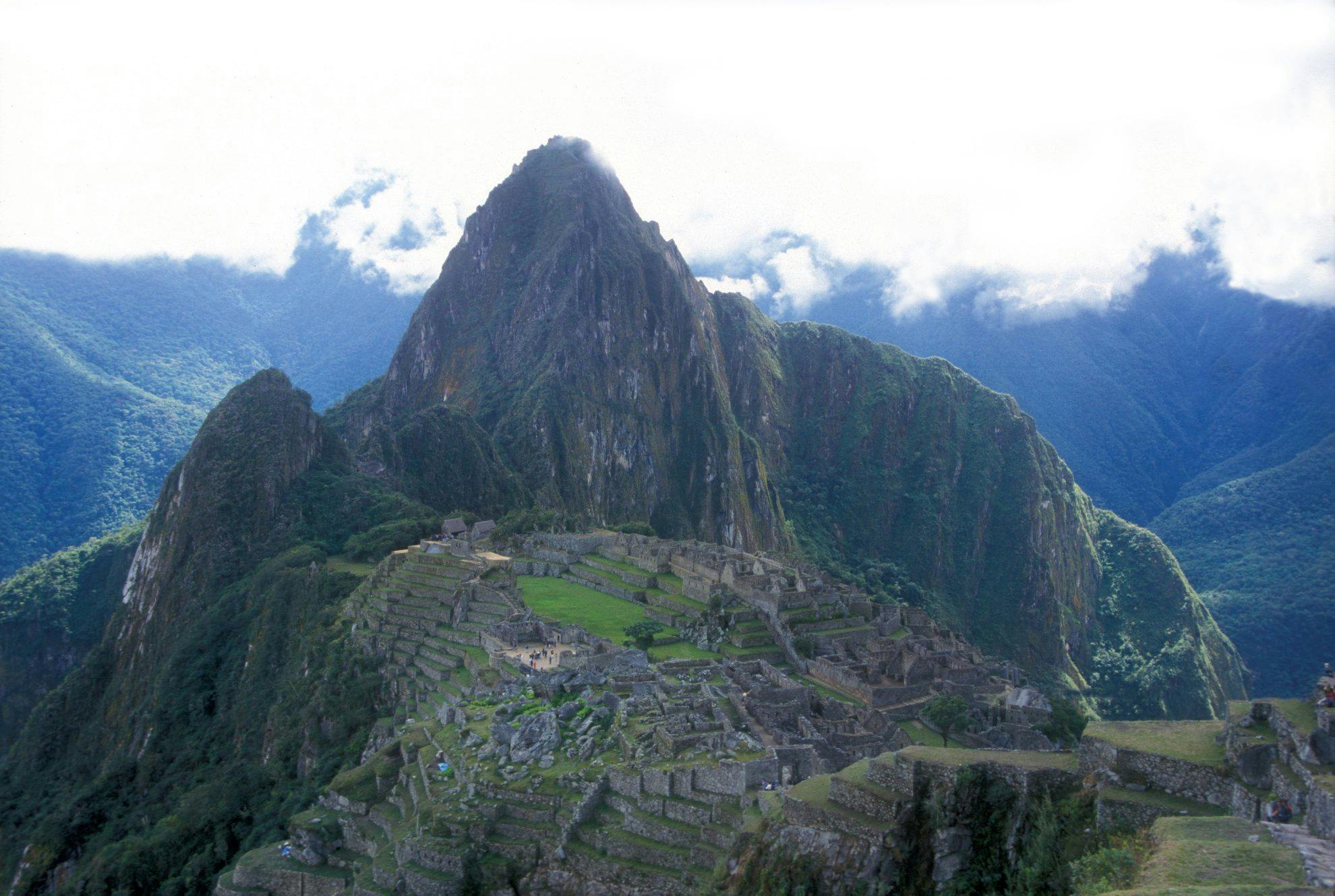Paula Short finds similarities between the Inca Trail and some of New Zealand’s Great Walks
The Inca Trail has been on my ‘to do’ list for many years and so, when a planned trip to Mongolia fell through, I finally found a good excuse to head to South America. My husband and I grabbed last minute seats on a convoluted flight to Lima via Buenos Aires and arrived fairly unprepared in Cuzco in late June right as the largest Inca festival of the year was taking place and we are lucky to find one of the few rooms still available in town.
Numbers on the Inca Trail are now restricted to 500 people each day and walkers must go with a guided group. So, we enquire about transport to the Inca Trail only to discover that booking the guided trip takes three days to arrange as the company must take your details to the local council office to arrange permits.
A guided trip is not exactly what I had in mind for my Inca Trail experience but we’re here now so we might as well just do it. Our group of 12 people is a mixed bag of nationalities: Dutch, English, German, French Canadian and American. Our guide, cook and porters are sturdy locals.
Reaching the trailhead we complete formalities at a small booth and then cross the swingbridge over the Urubamba River to begin the trail. Our porters have gone on ahead and set up our lunch stop. We come across them in a grassy field where they have prepared a cooked lunch complete with fold-out chairs – luxury!
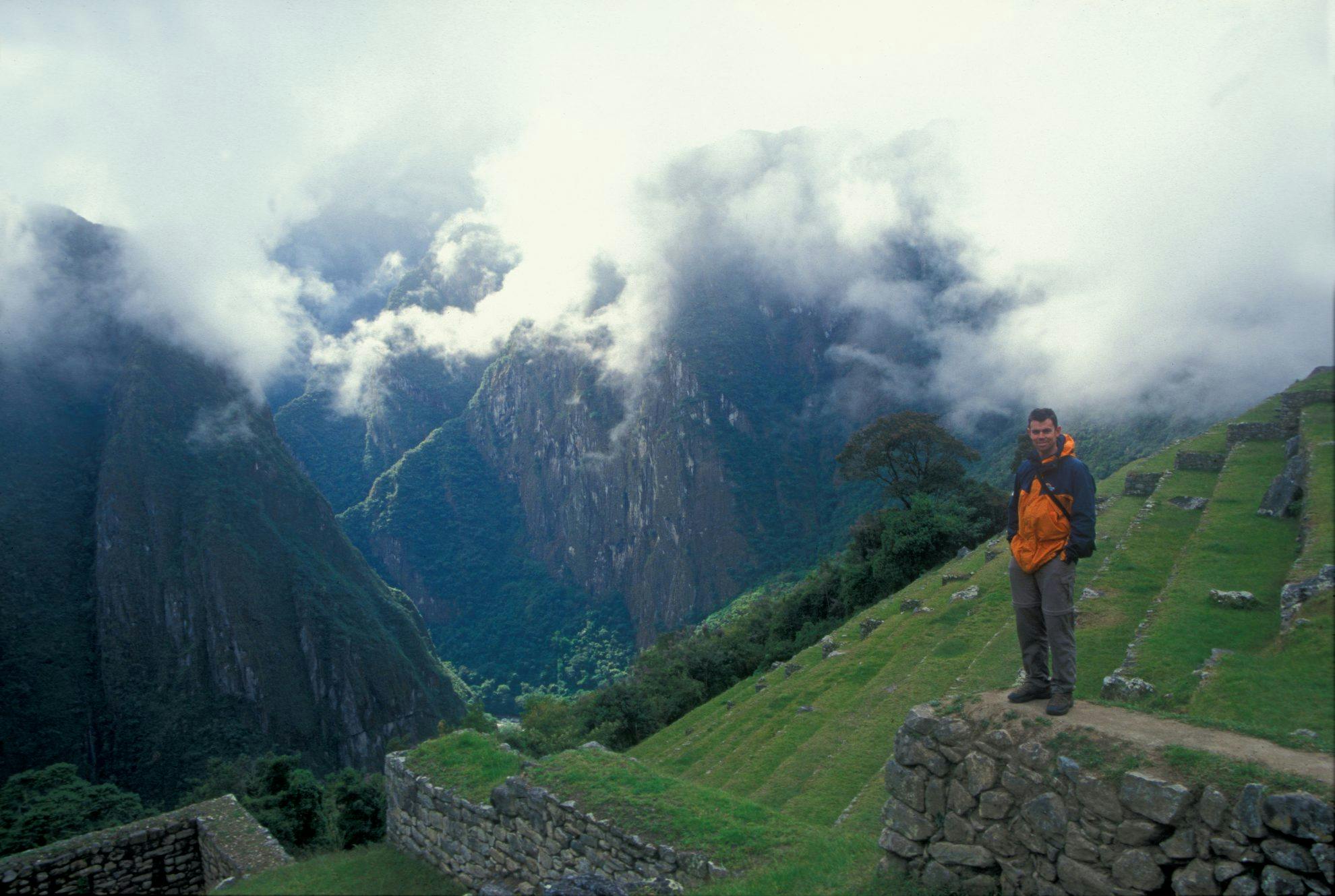
The mist clears over Machu Picchu
From here the trail winds its way gently uphill to the first major archeological site of Llactapata or ‘town on the hillside’. The exact function of these ruins is unknown but the site consists of many agricultural terraces, houses and a round tower. As the dusty trail continues, we are passed by locals taking their heavily-laden donkeys to their farms up the valley.
We arrive at the campsite, in a small farmyard, to find the porters have pitched our tents and a hearty three course meal is ready to be served. After purchasing some beers from the farm owner, the evening becomes more entertaining as the English guys put on an irreverent show with some hand-knitted finger puppets, a popular item sold by street vendors in this part of South America.
The next morning we make an early start for Dead Woman’s Pass, which, at around 4200m, is the highest point on the trek. As the effects of the altitude kicks in, everyone walks at their own pace. Reaching our lunch stop, the porters serve a steaming cup of coca tea. This concoction, made of coca leaves, is supposed to help with the altitude, but I have tasted this foul brew already in Cuzco and can’t handle the thought of anymore.
From here we can clearly see the rest of the way to the pass. It seems that 500 trekkers, porters and guides are all on this section of the trail at once as a long snaking line of people winds its way upwards. Our stay at the pass is short as the weather is changing.
The stony path now heads steeply downhill to the night’s campsite and my knees take a hammering. The camp has good facilities – flush toilets and even showers – but is damp and crowded. After another wonderful dinner each nationality treats the porters to a snippet of their culture.
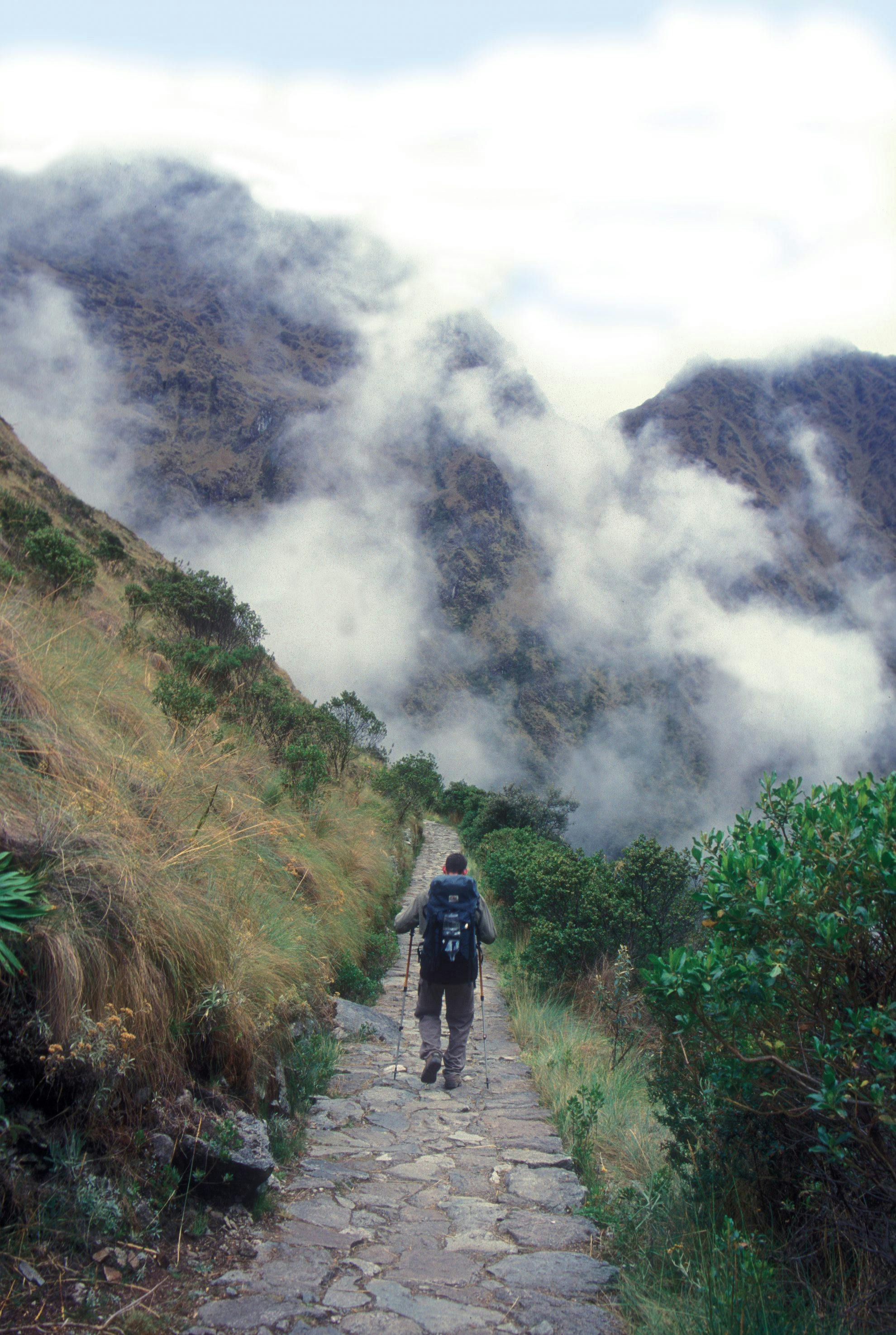
The mist rolls in as the Inca paving begins
Husband, Chris produces a Haka and outperforms everybody.
Next day, the clouds roll in as we follow the stone steps up to the next pass. An hour up the trail we reach the ruin of Runcuracay, which is thought to have been a kind of staging post for messengers on the trail. After descending the pass, we reach the ruin of Sayacmarca and leaving our packs at the bottom we climb a steep staircase to the site which has fantastic views.
Chris is starting to feel unwell and comes down with an horrendous case of diarrhoea, which fortunately does not reveal itself until we reach our camp near the Hostel Machu Picchu which has great toilets and hot showers. Our tents are pitched on a narrow ledge with stupendous views and Chris disappears into one for the rest of the afternoon.
Breakfast the next morning is at 4am. By then me and four more of our group are sick. At 5am we join the dim line of lights heading for Intipunku, the gate of the sun, which we reach at sunrise, hoping for our first glimpse of Machu Picchu, but the clouds have rolled in low. A short time later we are queuing at the entrance to the site.
In 1911 when American historian Hiram Bingham discovered Machu Picchu it was overgrown with vegetation. Today the clouds lift to reveal a perfectly manicured tourist attraction, but that cannot take away from the sense of astonishment you feel when exploring a place like this. Why on earth did the Incas chose to build a city on such a rugged and sheer hillside? Their engineering skills were certainly incredible as the ruins left standing today eminently prove.
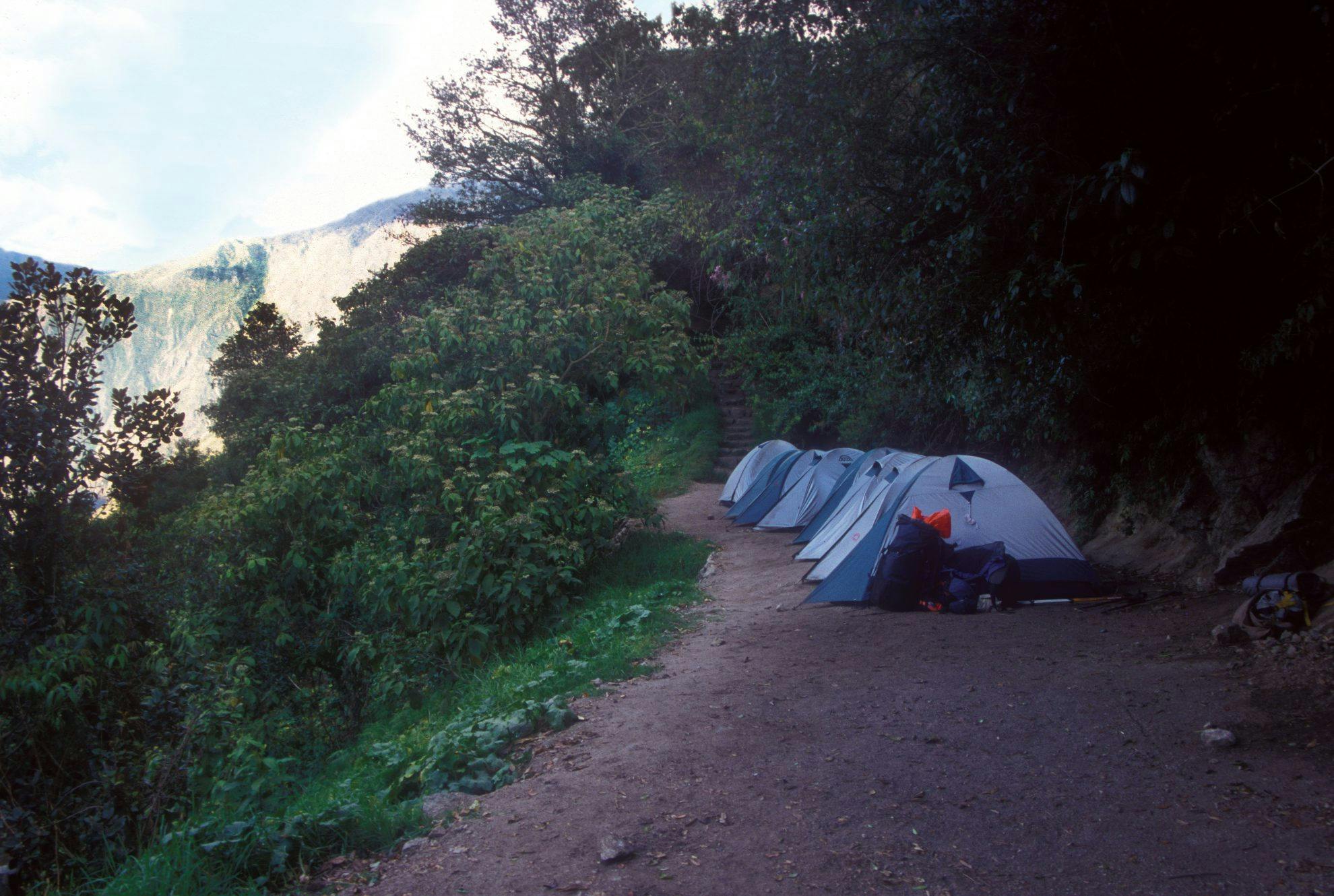
The third campsite, spectacularly located on a narrow ledge overlooking the Urubamba Valley
I cannot help but compare the Inca Trail with the Milford Track. Both end at a destination which is a tourist icon. Both Milford Sound and Machu Picchu face pressures from increasing tourist numbers that if not managed could destroy the very reason these places are so special. Many Peruvians are concerned at the ecological damage occurring on the Inca Trail. However, limiting the number of people able to walk it has driven the prices up. You will see few South American faces on the trail now, as it becomes affordable only to foreigners.
Is there a lesson here for us?





